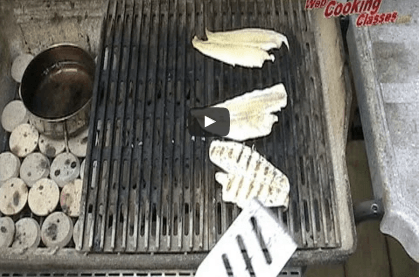Because white fish filets are so delicate and your barbeque is so intense, when the two meet the result is burned, dry fish that is destroyed when it sticks to the grill. However, changing your grill’s heat is the key to discovering how to grill fish without sticking to the grates and achieving great grilling success.
The cause of delicate products sticking to the grill is the same thing that gives you attractive marks when you grill hamburgers or steak, the coagulation of proteins and caramelization of sugars. Not being aware of these changes is one of the 3 big mistakes most people make when grilling.
Coagulation is the stiffening and shrinking of proteins. That’s why your grilled hamburger is considerably smaller than the raw burger you started with. Caramelization occurs when sugars reach 320F / 160C and turn brown.
However, fish is much more delicate than steaks for grilling, and need to be treated differently. Technically, fish proteins will coagulate before sugars caramelize, stiffening and shrinking around the grill grates, holding on tightly.
By the time you’ve achieved the grill marks and caramelization of sugars that will release the fish from the grill’s grasp, it’s too late. Your fish is burned.
How to grill fish without sticking lies in changing the way your grill is delivering heat during the cooking process. By turning one side of the grill’s heat off, and placing a pan of water on the opposite side, and closing the lid, you can create a moist, indirect conductive cooking method to delicately cook the fragile fish.
When you place the fish on the indirect-heat side of the grill, you can cook with the confidence that you’re not subjecting the soft proteins to the intense dry heat of the barbeque. With this method, you’ll know how to grill fish confidently without leaving most of your dinner stuck to the grill.
Beside fish, what other delicate products might you apply this method to? I’d love to hear your inspirations with a comment below:

